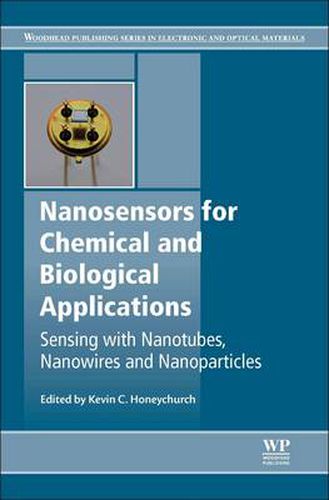Readings Newsletter
Become a Readings Member to make your shopping experience even easier.
Sign in or sign up for free!
You’re not far away from qualifying for FREE standard shipping within Australia
You’ve qualified for FREE standard shipping within Australia
The cart is loading…






Nano-scale materials are proving attractive for a new generation of devices, due to their unique properties. They are used to create fast-responding sensors with good sensitivity and selectivity for the detection of chemical species and biological agents. Nanosensors for Chemical and Biological Applications provides an overview of developments brought about by the application of nanotechnology for both chemical and biological sensor development.
Part one addresses electrochemical nanosensors and their applications for enhanced biomedical sensing, including blood glucose and trace metal ion analysis. Part two goes on to discuss spectrographic nanosensors, with chapters on the use of nanoparticle sensors for biochemical and environmental sensing and other techniques for detecting nanoparticles in the environment.
Nanosensors for Chemical and Biological Applications serves as a standard reference for R&D managers in a range of industrial sectors, including nanotechnology, electronics, biotechnology, magnetic and optical materials, and sensors technology, as well as researchers and academics with an interest in these fields.
$9.00 standard shipping within Australia
FREE standard shipping within Australia for orders over $100.00
Express & International shipping calculated at checkout
Nano-scale materials are proving attractive for a new generation of devices, due to their unique properties. They are used to create fast-responding sensors with good sensitivity and selectivity for the detection of chemical species and biological agents. Nanosensors for Chemical and Biological Applications provides an overview of developments brought about by the application of nanotechnology for both chemical and biological sensor development.
Part one addresses electrochemical nanosensors and their applications for enhanced biomedical sensing, including blood glucose and trace metal ion analysis. Part two goes on to discuss spectrographic nanosensors, with chapters on the use of nanoparticle sensors for biochemical and environmental sensing and other techniques for detecting nanoparticles in the environment.
Nanosensors for Chemical and Biological Applications serves as a standard reference for R&D managers in a range of industrial sectors, including nanotechnology, electronics, biotechnology, magnetic and optical materials, and sensors technology, as well as researchers and academics with an interest in these fields.